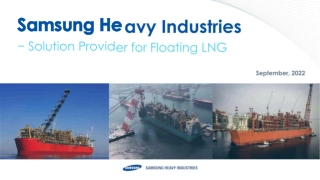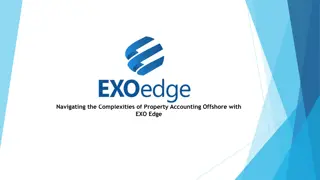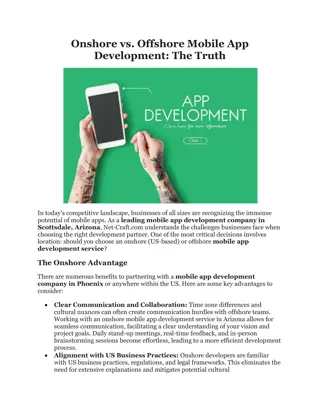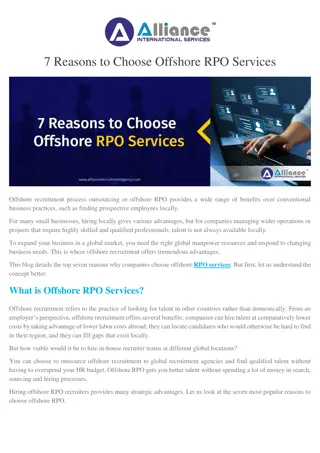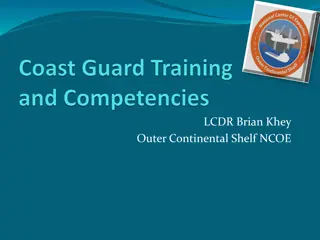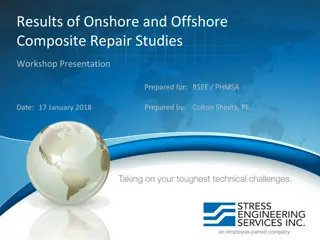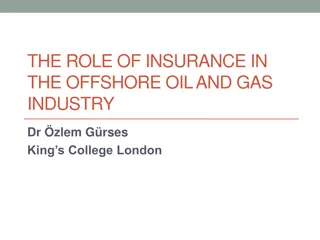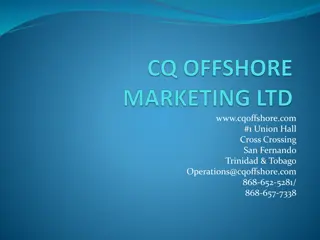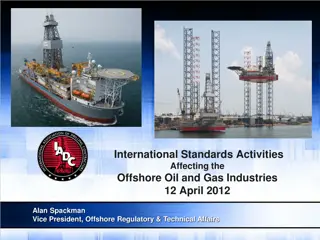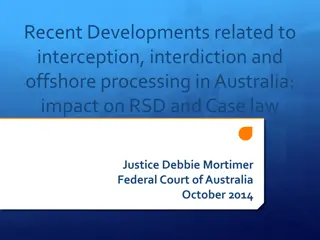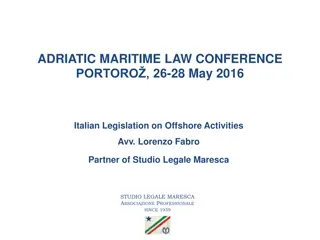Center for Offshore Safety (COS) Overview
The Center for Offshore Safety (COS) is dedicated to promoting the highest level of safety in offshore drilling operations through effective leadership, safety management systems, and independent auditing. The organization focuses on elements such as safety and environmental management systems, SEMS purpose, the Bow Tie approach to hazard prevention, and operator/contractor interfaces. COS core functions include data collection, analysis, and reporting to improve safety performance and industry practices.
Download Presentation

Please find below an Image/Link to download the presentation.
The content on the website is provided AS IS for your information and personal use only. It may not be sold, licensed, or shared on other websites without obtaining consent from the author.If you encounter any issues during the download, it is possible that the publisher has removed the file from their server.
You are allowed to download the files provided on this website for personal or commercial use, subject to the condition that they are used lawfully. All files are the property of their respective owners.
The content on the website is provided AS IS for your information and personal use only. It may not be sold, licensed, or shared on other websites without obtaining consent from the author.
E N D
Presentation Transcript
Center for Offshore Safety COS Charlie Williams Executive Director
Center for Offshore Safety Our Mission... Promote the highest level of safety for offshore drilling, completions, and operations by: effective leadership, communication, teamwork, safety management systems independent 3rd-party auditing & certification.
Current Governing Board Operators Anadarko BP Chevron ConocoPhillips ExxonMobil Shell Statoil Stone Energy Total Vacant Rig Contractors Diamond Offshore Ensco Noble Transocean Vacant Service/Supply Contractors Baker Hughes Halliburton Oceaneering Schlumberger Vacant Trade Associations IADC NOIA PESA COS Executive Director
Safety & Environmental Management Systems What are the elements of SEMS? Leadership Mechanical Integrity Safety and Environmental Information Pre-Start-Up Review Hazard Analysis Emergency Response and Control Management of Change Incident Investigation Operating Procedures Audit Safe Work Practices Records and Documentation Training
SEMS Purpose Goal: Safe & Reliable Operations / Operational Integrity SEMS is a key mechanism to reduce the likelihood of major incidents SEMS Technical Standards / Safe Work Practices and Operating Procedures Operating Processes / Decision Making Safety Values / Human behaviors Skills and Knowledge + + +
Bow Tie Approach Major Hazard Top Event Consequence Threat Prevention Barriers Mitigation Barriers
COS Core Functions Data Collection, Analysis and Reporting Industry information Lessons from major and high potential severity incidents Safety performance indicators Identify opportunities for improvement Assistance Create good practices Assist companies with COS programs Continuously improve safety performance and safety culture Improve and sustain industry skills and knowledge Outreach & Communication Annual Safety Forum Workshops Meetings (including key stakeholder interface) Publications Accreditation and Certification SEMS Audits Audit standards Accreditation of Audit Service Providers
COS SEMS Toolkit Audit Protocol Checklist Compliance Readiness Worksheet Operator-Contractor Letter Templates Audit Guidance Document
SEMS Audit Protocol Checklist 13 sections that corresponds with API RP 75 & 30 CFR 250 Subpart S (SEMS) Has a management representative been appointed that is responsible for establishing, implementing and maintaining the SEMS? Audit Question [Specifically you, through your management, must:] (b) Appoint management representatives who are responsible for establishing, implementing and maintaining an effective SEMS program. 250.1909(b) 5 [This recommended practice is based on the following principles:] c. Management appoints specific representatives who will be responsible for establishing, implementing and maintaining the safety and environmental management program. RP 75 1-1.2.2(c)
Accreditation & Certification COS-2-01 Qualification & Competence Requirements Audit Leads & Auditors COS-2-02 Training Program Requirements for Auditors COS-2-03 Certification to API RP 75 COS-2-04 Accreditation of Audit Service Providers COS-2-05 Standardized Audit Report Form
Key Objectives - COS 3rd Party Certification COS Members are auditing to verify they are in conformance with SEMS requirements COS SEMS audits can be submitted as a BSEE audit COS Member audit results are submitted to COS to enable industry analysis and learning. SEMS good practices identified in audits can be shared with COS Members Learnings can result in the development of industry good practices leading to improved industry performance. 12
COS Activities Leadership Site Engagement Safety Performance Indicators Improving Industry Learning Capability Verification of Contractor Skills & Knowledge (Planning & Board Review Stage) Performance Based SEMS ----------------------------------------------------- Knowledge Base & Analysis (Complete)
Working COS Safety Performance Indicator Topics SPI Publication Part 1 Practice Part 2a SPIs Part 2b SPI Collect Part 2c SPI Analysis Part 2d SPI Reporting 14
Verification of Contractor Skills and Knowledge (VCSK) Being Developed & Considered by the COS Board Opportunity - Standards for the industry Elements Industry standards Competence certain roles training by certain roles Verification process/tool 15
COS Vision & Path Forward Promote an industry culture of incident-free operations - Process safety in addition to personal safety - Emphasis on behavior - No harm to people, no harm to environment One-stop central source for: - Information & knowledge - Audit accreditation - Program certification - Tools and technical assistance Elevate the industry s quality and safety standards - Create and share best practices - Continuous improvement


